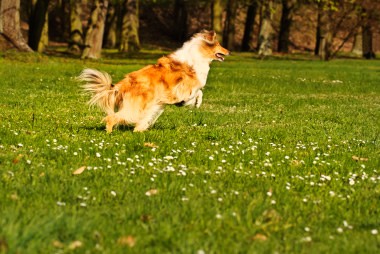Greatest Thing Since Sliced Bread? Laparoscopic Spay Is in the Running

The concept of laparoscopic surgery emerged at the turn of the 20th century, but it didn’t become the sought-after bandaid or keyhole surgery until well into the 1970s. Since then, this minimally invasive technique has become a household name, due in large part to its many advantages like minimized post-op pain, faster recovery time, and fewer possible infections.
A laparoscopic spay brings to your female dog the same relative comfort and safety that humans have adopted for decades. The best part? Less worry for our valued dog owners!
Make a Difference
The traditional spay surgery involves removing the entire reproductive system from the body through a 2-3 inch abdominal incision. Contrary to this standard surgery, laparoscopic spay makes a huge leap – with about a ½ -inch incision.
Laparoscopic surgery is not usually employed for male dogs. In some cases, the testicles haven’t descended from the abdomen (an event that normally occurs by 3 months of age), making a dog vulnerable to serious health issues, including testicular cancer. Only then is laparoscopy effective and safe for male animals.
Lights, Camera, Action
The removal of the ovaries, or ovariectomy, is handled by a veterinary surgeon equipped with a state of the art fiber-optic camera (laparoscope), video system, and surgical instruments. Through the small opening in the abdominal wall, we can see the organs on an external monitor.
This up-close and personal view of an animal’s uterus and ovaries allows us to accurately (using tiny and precise cuts) perform this surgical procedure. The surrounding blood vessels are cauterized and the incision is closed up.
Going Home After Laparoscopic Spay
Most dogs, after a laparoscopic spay, suffer minor effects of anesthesia for the first day or so, but they are typically in less pain than dogs with a traditional spay surgery. Yes, they must wear a cone for a couple weeks after the procedure (adding insult to injury!), but without one, they will have easy access to lick or bite at the incision site.
As we mentioned, the incision is small enough to make healing a breeze, and infection or other complications are often avoided. Dogs must rest fully; discourage any running, jumping, or roughhousing with kids or other pets.
Possibly the best result of this minor, yet critically important, surgery are the increased snuggles you get to enjoy from your healing dog. Priceless!
Present and Future Health
Spaying obviously eliminates the chance of unwanted litters, cutting down the ill-effects of pet overpopulation. What’s more, sterilizing pets greatly reduces the chances of future malignant cancers or growths in the reproductive system and improves behavioral concerns (no more heat cycles, for example). What’s not to love about contributing to a pet’s lifelong health?
If our veterinarians or staff members can help you with any questions or concerns about the incredible laparoscopic spay, we’re always here for you!
